BEC Experiment 1
Note: For those unfamiliar with BEC techniques refer to the Univ. of Colorado “What’s a BEC?” in order to better understand some of more obscure jargon on this page.
The Vacuum System and The Two Glass Cells
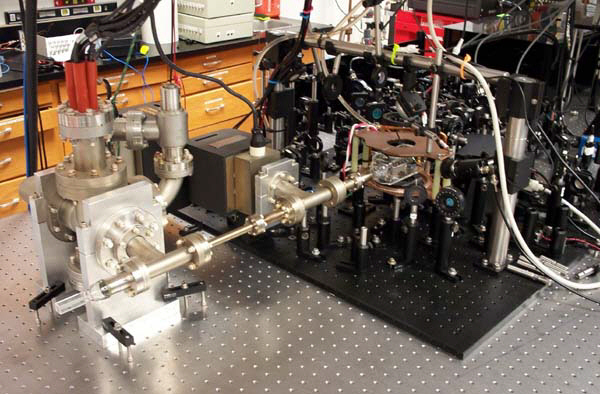
Here is a picture of the system without any imaging optics or transfer coils. The larger glass cell in the background is the Magneto-Optical Trap (MOT) cell. Rubidium atoms are laser cooled in this cell to produce a MOT of greater than one billion atoms at several hundred uK. In the bottom left of the image, one can see the “science cell.” This smaller glass cell is where the evaporation stage of BEC production occurs, as well as any interaction with imaging beams or other experimental parameters.
Close Up of MOT Cell
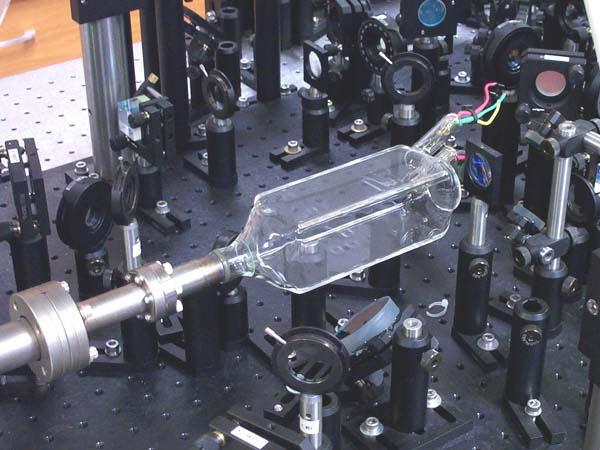
Here one can see the MOT cell in detail, as the magnetic fields coils and some of the MOT optics have been removed. The two glass tubes attached to the MOT cell are the rubidium “getters;” a current is sent through these to evaporate off a steady stream of rubidium atoms. The gas enters a vacuum environment of 10-10 torr. The ultra-high vacuum system provides a gradient vacuum; the vacuum is greater than 10-10 torr in the science cell. The high vacuum minimizes loss of BEC atoms through collisions with background thermal atoms.
Transfer Coils
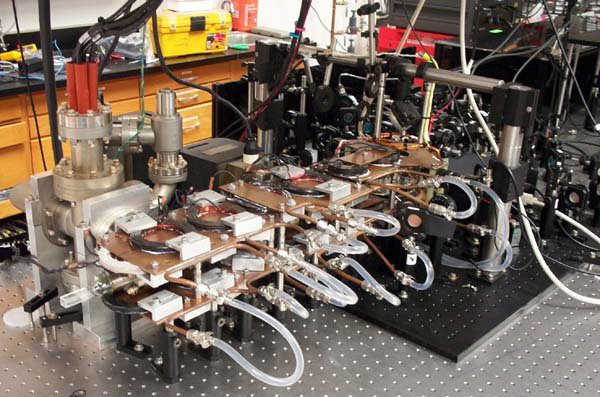
Pictured here is the transfer mechanism. Once we’ve created a MOT, we need to get it to the science cell without heating (too much). We do this by loading the cloud of cooled atoms into a quadrupole magnetic field. We then transfer the zero point of this field along the vacuum tube by ramping on and off the sets of coils for about four seconds. The atoms adiabatically follow the zero point. The currents peak at ~240 amps, so these coils get HOT. Hence, the plastic tubes in the picture are a chilled water cooling system.
TOP Trap
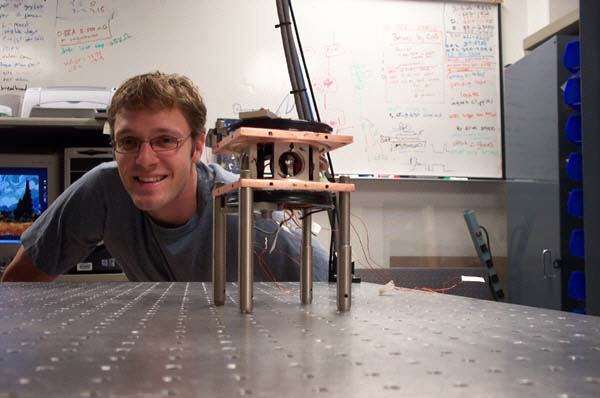
Missing from the above picture is the final destination of the atoms, the Time-Orbiting-Potential (TOP) trap. This structure surrounds the science cell. The addition of the aforementioned quadrupole field and a rotating bias field yields a a harmonic trap for the atoms. (The atoms are moving slow enough so that they see a time average of the fields). Here RF induced evaporation is used along with “circle of death” (instantaneous field) evaporation to take the uK cloud down to the BEC transition. The result is a Rubidium87 BEC with ~500,000 atoms at approximately 22nK. At a few billionths of a degree above absolute zero, its certainly the coldest place in Arizona!
The Works
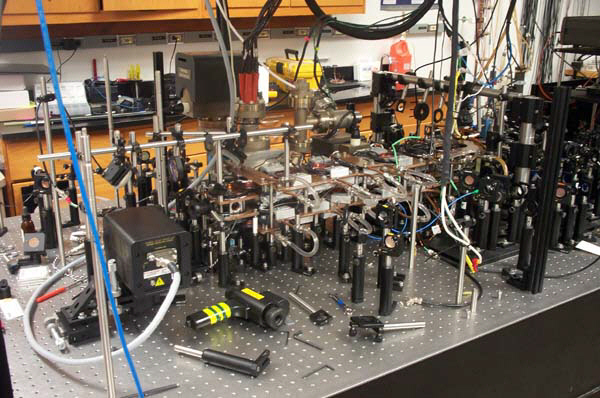
Here is a fairly up-to-date picture of the experiment. Included is the camera, a PIXIS 1024 from Princeton instruments. Its difficult to see in the image, but we have two imaging axes, both horizontal and vertical.
Diode Lasers
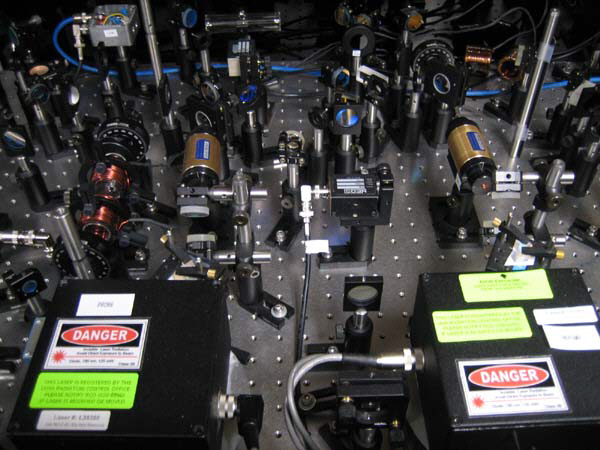
Not to undersell the complexity of the lab, here is a picture of two of the lasers used to interact with the atoms (repump and phase-contrast imaging). These are locked to the atomic line of choice through a saturation spectroscopy setup. Not pictured is the Ti-Sapphire laser which provides 500 mW of power for the MOT beams, as well as absorption imaging light.
Diode Lasers part II
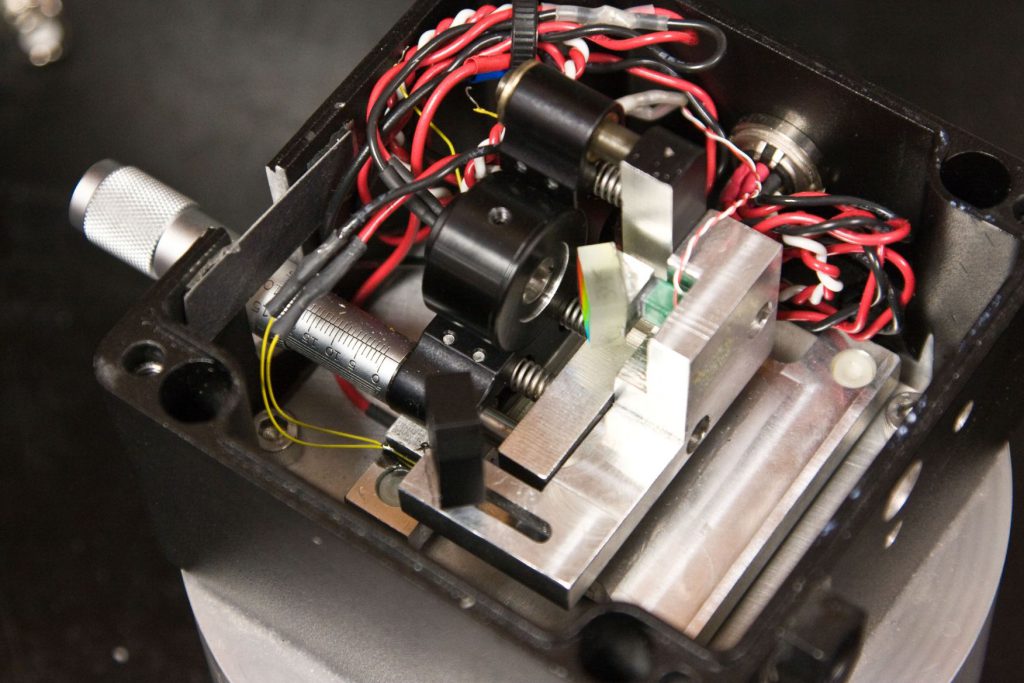
Here’s a close-up of the diode laser system inside one of the black boxes in the picture above. The laser itself is only a few millimeters across, and is housed inside the round black chunk of metal in the middle of the photo. Light from the laser hits a diffraction grating, and is partially sent off to the experiment, and partially sent back into the laser for wavelength control. The box that holds the laser system helps isolate the laser from temperature fluctuations and air currents, and keeps stray light from leaking out into the lab.
The Rb MOT
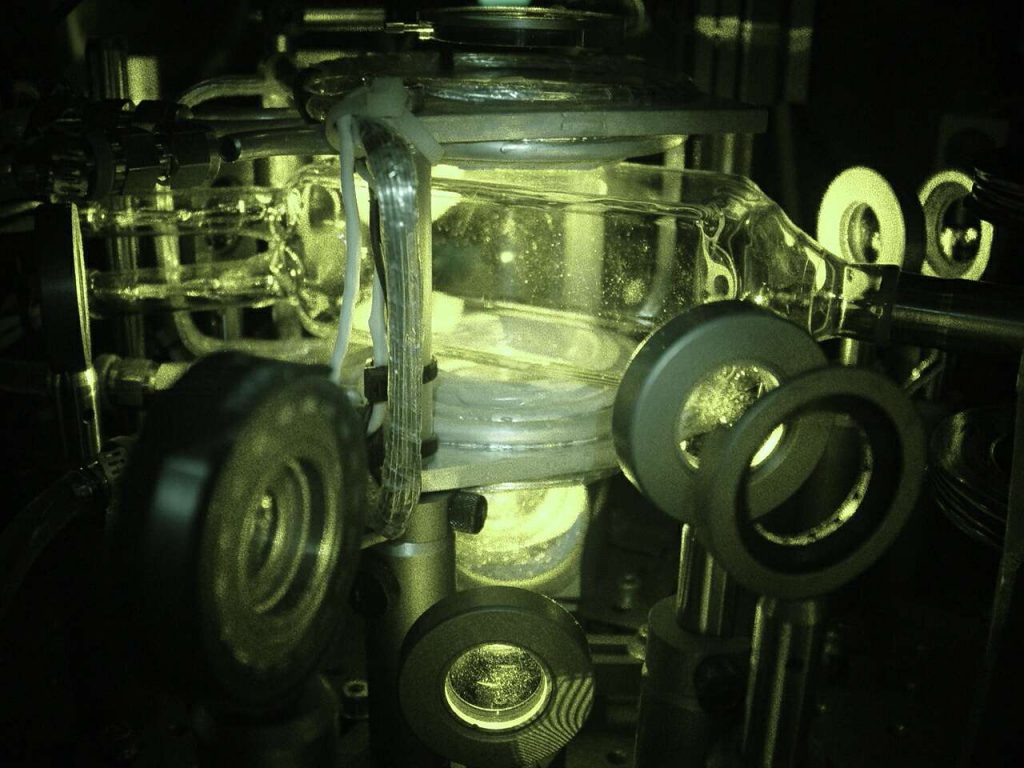
This image shows a picture of the Magneto Optic Trap. The MOT is the spot in the middle of the vacuum cell: in this image, nearly a billion Rb atoms are held in place by laser beams and magnetic fields. The atoms are isolated from the room-temperature walls of the vacuum cell by the ultra-high vacuum environment. This nearly perfect “thermos bottle” allows us to use laser beams to cool the atoms to a few millionths of a degree above Absolute Zero.

